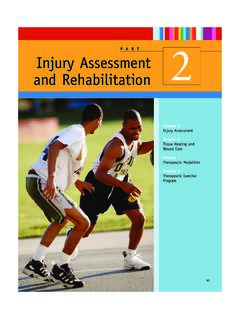Transcription of Chapter 5 Outline - California State University, Northridge
1 1 | Page Chapter 5: How Sociologists Do Research Chapter Summary Sociologists conduct research on almost every area of human behavior. The research conducted may be at the macro level, encompassing broad matters such as social structure, or at the micro level, which addresses individualistic and small group interaction. Sociological research is necessary for a variety of reasons. Research will confirm or deny the validity and extent of what is considered to be true simply because it makes sense. Whereas culture has a significant impact on what one believes to be true, there needs to be a more objective manner in which to discover truth.
2 Research provides the method through which truth can be discovered. To discover this truth, scientific research is used. Henslin identifies eight steps in the scientific research model. These are (1) selecting a topic, (2) defining the problem, (3) reviewing the literature, (4) formulating a hypothesis, (5) choosing a research method, (6) collecting the data, (7) analyzing the results, and (8) sharing the results. Other authors may identify more than or fewer than eight steps, but the basic model remains the same. Two key elements to research are validity and reliability.
3 Validity addresses whether or not the research measures what it is intended to measure. Reliability is the extent to which research produces consistent or dependable results. In conducting research, sociologists choose between six research methods : (1) survey, (2) participant observation, (3), secondary analysis, (4) documents, (5) unobtrusive measures, and (6) experiments. Sociologists choose their research method(s) based on four primary factors: resources, access to subjects, purpose of the research, and the researcher s background.
4 There are a number of factors researchers must take into consideration beyond the research method chosen. Some of these are beyond the control of the researcher. It involves a change in the subject s behavior because he or she knows they are being studied. Gender and race are also considerations that must be controlled by the researcher, especially when the sample being studied or the subject of the research is gender or race related. Gender and race can be significant confounding factors in sociological research, and sociologists need to take careful steps to prevent gender or race differences from biasing their findings.
5 Ethics are of fundamental concern to sociologists when it comes to doing research. Although sociologists are expected to follow ethical guidelines that require openness, honesty, truth, and the protection of research subjects, their studies can occasionally elicit great controversies. The Brajuha research created considerable controversy and legal complications over the protection of subjects. Laud Humphreys generated a national controversy by misleading subjects when conducting sensitive research about bisexual men s personal lives.
6 A national columnist referred to his research as the product of sociological snoopers. A court case loomed over his actions. 2 | Page Although a vital part of sociology, research cannot stand alone any more than theory can stand alone. Research and theory need to work together in order to fully explore and understand human behavior. Theories need to be tested, which requires research. And research findings need to be explained, which requires theory. In short, research produces facts, and theory provides a context for those facts. 3 | Page Chapter Outline I. What is a Valid Sociological Topic?
7 A. Sociologists research just about every area of human behavior at both the macro and micro levels. B. No human behavior is ineligible for research, whether it is routine or unusual, respectable or reprehensible. II. Common Sense and the Need for Sociological Research A. Common sense cannot be relied on as a source of knowledge because it is often limited and based on limited information. B. To move beyond common sense and understand what is really going on, it is necessary to do sociological research. III. A Research Model A.
8 Selecting a topic is guided by sociological curiosity, interest in a particular topic, research funding from a governmental or private source, and pressing social issues. B. Defining the problem involves specifying what the researcher wants to learn about the topic. C. Reviewing the literature uncovers existing knowledge about the problem, helps narrow down the problem and learn what areas need to be researched, and provides ideas about what questions to ask. D. Formulating a hypothesis involves stating the expected relationship between variables, based on predictions from a theory.
9 Hypotheses need operational definitions, or precise ways to measure the variables. E. Choosing a research method is influenced by the research topic and the questions that need to be answered. F. Collecting the data involves concerns over validity, the extent to which operational definitions measure what was intended, and reliability, the extent to which data produce consistent results. Inadequate operational definitions and sampling hurt reliability. G. Analyzing the results involves the use of either qualitative or quantitative techniques to analyze data.
10 Computers have become powerful tools in data analysis because they reduce large amounts of data to basic patterns, take the drudgery out of analyzing data, allow the researcher to use a variety of statistical tests, and give the researcher more time to interpret the results. H. By writing up and publishing the results, the findings are available for replication. That is, others can repeat your study to see if they come up with similar findings. IV. Research methods A. Surveys involve collecting data by having people answer a series of questions.













